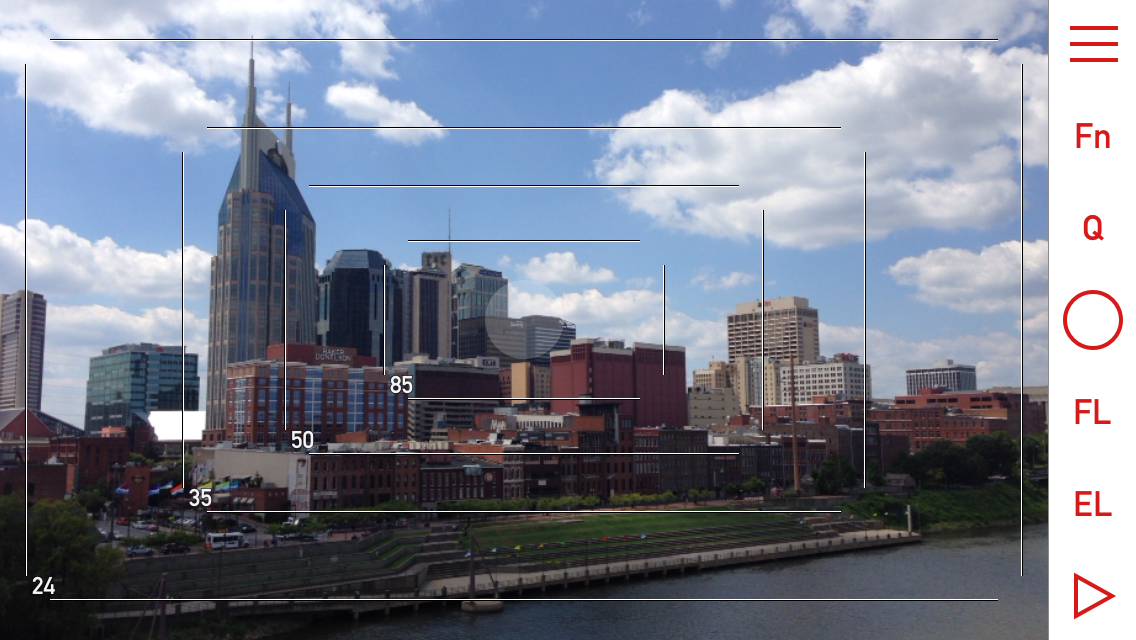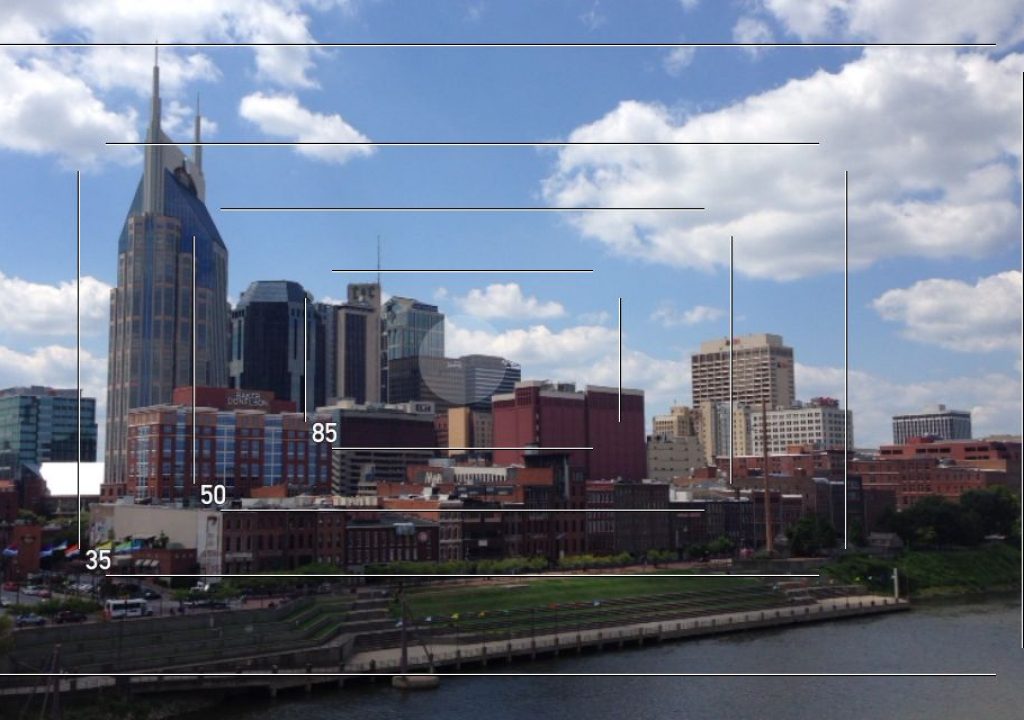It was about two years ago I wrote a post about DIRE Studios ViewFinder Cine app for cinematographers and photographers. They had a few variations of this app depending on your wants and features. Earlier this year they totally revamped the app and renamed it ViewFinder Mark II and bundled everything into one app. I was fortunate enough to get an early version of the download to try out. I have to apologize to Agnes over at DIRE for not creating this article sooner but I was quite busy the first half of this year and the review kept being pushed back so my sincere apologies Agnes!
So what is ViewFinder Mark II?
Simply put, ViewFinder Mark II (VF MkII) is a pre-visualization app that will aid you in many different ways. From location scouting to on set visualization, the VK MkII can offer many benefits. Yes, the name has the word “Viewfinder” in it and I will not go as far as to say it will replace the traditional viewfinders cinematographers and directors use because I feel there are benefits to using those traditional, time-tested tools. But that’s not to say the VF MkII cannot replace the traditional viewfinder in some situations.

So what’s it good for?
Before I dive into features, let me list some of the ways the ViewFinder Mark II is good for. I have used the app in these situations and I can honestly say the app has been a huge help!
Location Scouting
The VF MkII allows you to not only see in-screen your field of view with a particular lens but it allows you to capture the image and even add a map droplet via GPS in the meta data (there’s a whole plethora of ways this data can be useful but I’ll wait to dive into features). You can quickly see if a particular location or even the particular area will work for a certain shot. You can grab several photos for options.
Not only can you get an idea of what lenses you will need to make sure to have on hand for a particular scene but you can use that same captured photo to send to the director for a location approval.
Equipment
Often times before I do a location scout I already have an idea of what camera I will be using. But sometimes I don’t and I need to narrow my choices down. The beauty of the VF MkII is that you can have cameras and lenses saved in your queue inside the app. In the previous version you could only have up to 4 pre-saved cameras but in the Mark II version there are no limits. As you go around to your locations on your scouting trips you can easily begin to narrow your choices by selecting different cameras and their associated lenses to determine which camera will be the right sensor (or film stock) for your production. Yes, the app even includes several film stock choices should you be shooting on celluloid.
Previz
Another great benefit to using the app is that you have the ability to start visualizing the scene for that location. If you have your actors or stand-ins before you go into production, use them and frame their shots to get an idea of framing you’d like to have for that location or set. You can capture the shots using the app and begin piecing the images together for the scene. This helps you quickly visualize the progression and allows you to work more efficient.
Onset Decisions
Sometimes after you get to moving in your production or you don’t have the option to location scout, you need to make the calls on what lenses you are going to use right there and then. Instead of having your AC work more than he/she needs to or maybe you’re a one man show and need to quickly decide what lens to use, the VF MkII can help. Since you already know what camera you are using you can have that camera pre-saved in the app with your pre-chosen sets of lenses and you can get a quick glance at what the shot will look like before you even mount a camera. Trust me, when time is of the essence, your mobile device is often much easier to take out of your pocket and grab a quick glance than mounting a lens. For those of you shooting documentaries, such as myself, this is a huge benefit over carrying a directors viewfinder.
Those are some of the benefits I’ve found using the ViewFinder Mark II. I’m sure you may discover more but that should get you appetite a little wet. Now, let’s move onto features!
ViewFinder Mark II Features
Cameras
DIRE made sure they included and continue to update as many cameras out there as possible. I have yet to find one I can think of that is not listed. But the real beauty is that you have the option to create your own virtual cameras. Why is this important?
Let’s say, like me, you have a camera in which you’re using the Metabones Speedbooster on GH4 or BMPCC. You will want to have the ability to see what focal lengths you can get with the same lenses with the adapter since those adapters effect your focal range. The VF MkII allows you to create your own virtual camera and select your sensor/image size and lens mount type. For me, I have the BlackMagic Pocket Cine camera with the Speedbooster so I’ve added a virtual camera with a sensor size of 20.57×13.71, the resulting sensor size with the adapter.
Lenses
Like the camera feature the VF MkII also has all the lenses ranging from 8mm all the way to 800mm so as a filmmaker or photographer I think you’ll find every lens size you will need. However, if you plan on using some of those wider options (and depending on which camera you use) you will need a wide angle adapter for your mobile as you will not be able to see the full view with those options without one. You mobile camera can only go so wide. But VF MkII has listed a couple of widely used converters as option for you to select in the app options. I don’t have a wide angle adapter so I leave that option turned off.
You also have the option of choosing Zoom Frame which allows you to see the precise millimeter when you zoom into your desired focal length. A very handy option when using zoom lenses and you are wanting a precise mark.
Function Key
Looking at the app on the side menu (The sidebar stays at the bottom of the phone, so depending on which orientation you have the tool bar could be on the right or the left) you will see the menu button at the top and the next button down (Fn) is the Function Key. This button can be assigned to a few different tools. You can assign the lens change option, aspect ration options, Toggle the zoom frame option on or off, toggle wide mode, enable the 3D leveler or enable the parallax/shift tool. I have mine selected to toggle the aspect ratio options.
Quick Menu
The next button down in the tool bar is the Quick Key (Q). This brings up a hud in which you can quickly select cameras, lenses, aspect ratios, the 3D level and the GPS to get your exact location at that moment. This is also where you have all of your saved cameras and where you can add more.
Shutter, Focus, Exposure and Playback
The last four buttons in the toolbar are the shutter button (so you can snap your photos), the focus lock (tap the image in which you want the image to focus on and then press this option), the exposure lock (same idea but for exposure) and the playback button to review and manage your images.
Not only does VF MkII record your GPS data and gives you a map droplet but it also allows you to export that data in a couple of different way. If you have a Dropbox account you can export your images with your metadata into a particular folder inside your Dropbox account. You can also save the images to you photo library on your phone and you can also email the photos. All the images can be exported with the onscreen data or as a full resolution clean image. Having the onscreen data helps when you’re still comparing cameras to use for your production. It’s also nice to have the clean image as well for location approvals. Also, you have the option of emailing the images as well as all the meta data but no option for the clean, full resolution image.
There are many other options in this app that I won’t go into on this review but I’ve covered the major features that I think will give you an idea of how useful and valuable this app is to have on your iPhone. If you want to get the full nitty gritty on VF MkII check out the PDF ebook DIRE created for the app.
Some Other Thoughts
There are a couple of features I’d like to see added to the app. As I mentioned before you can create a droplet using the GPS data recorded in the image you take. The problem is there is no way to map it, bookmark it or open the saved location in another app such as Apple Maps, Scout or Google Maps. Although I still think the feature is useful, it’s only useful when you’re in the area and you just need it for reference to that specific spot. However, I can see some times when you’re not in the area and you want routing directions to travel to that specific location. It would be nice to either port the data over to a mapping program or create the route right in the app, if that’s possible. Either way, that feature would be useful.
I’d also like to see an option to export multiple images at once instead of one at a time. Currently you have to click on each image to export. A time saver would be to choose a group of images from the thumbnails to either export via DropBox or save them to your image library. Some more export options would be useful as well such as Google Drive and other cloud-based storage options.
And lastly it would be good to have an option to export both a clean and screen capture version of the same image to save from having to export twice. Also an option to email a clean version of the image would be a good option to have.
Hopefully those options will be upgraded in future versions.
You can find the app in the iTunes store here. At $24.99 it’s not the cheapest tool in the shed but given you would need to pay at least $200 for even the cheaper director’s viewfinder models it’s a very good deal. The benefits very much outweigh the, somewhat perceived, high price tag (as far as apps in general are concerned) and you will definitely find yourself using it almost on every production.
Have you used the ViewFinder Mark II or any of the earlier versions? Please comment and let me know your thoughts.

